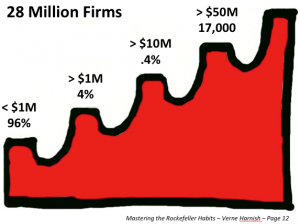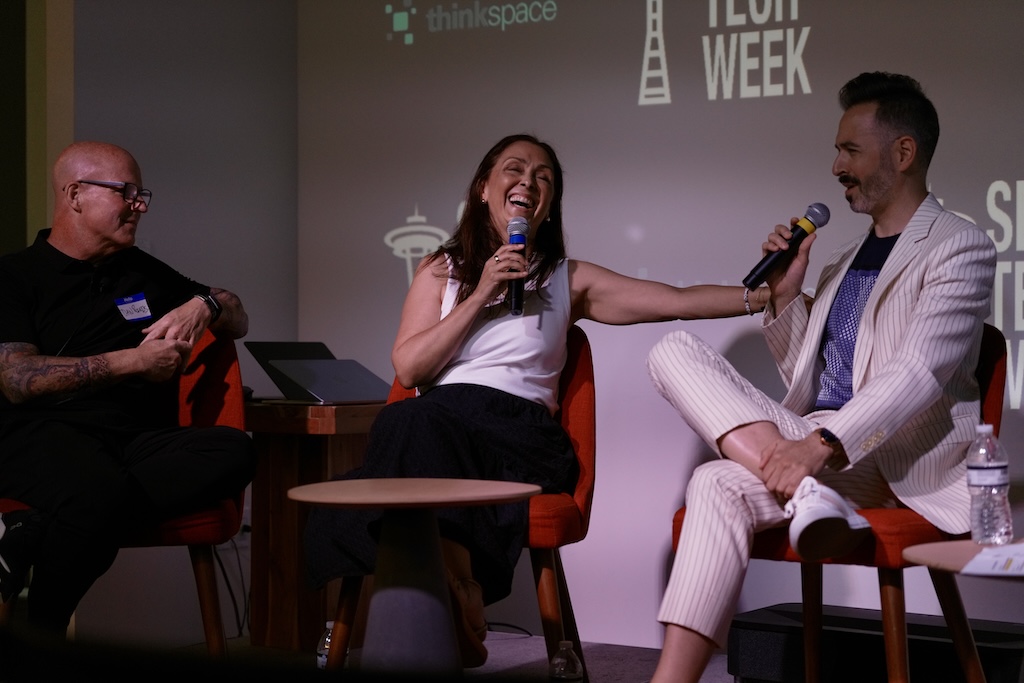 What makes a startup grow? What allows a startup go from pre-revenue, break-even, cash flow positive to hitting $1M in revenue? I had a conversation with Rebecca Lovell, Executive Director at NWEN (Northwest Entrepreneur Network) and we briefly discussed how startups hit an “inflection point” and since that conversation its been in my head all day. An inflection point (according to Wikipedia), is a point on a curve at which the curvature changes sign. The curve changes from being concave upwards (positive curvature) to concave downwards (negative curvature), or vice versa.
What makes a startup grow? What allows a startup go from pre-revenue, break-even, cash flow positive to hitting $1M in revenue? I had a conversation with Rebecca Lovell, Executive Director at NWEN (Northwest Entrepreneur Network) and we briefly discussed how startups hit an “inflection point” and since that conversation its been in my head all day. An inflection point (according to Wikipedia), is a point on a curve at which the curvature changes sign. The curve changes from being concave upwards (positive curvature) to concave downwards (negative curvature), or vice versa.
Inflection Points
In my MIT Entrepreneurial Masters Program, I recall Patrick Thean presenting to my class about how companies move through very predictable stages (inflection points) as they climb from $1M in revenue to $10M. He also stated that there are roughly 28 million firms in the US, of which only 4 percent get above $1M in revenue. Of those firms, only about 1 out of 10, or 0.4 percent of all companies, ever make it to $10 million in revenue and only 17,000 companies surpass $50 million. Patrick says that the barriers to growth are tied to:
- Leadership: Being able predict outcomes, hiring the right people and into the right seats and the wrong people off the bus (Jim Collins – Good to Great).
- Systems, Process, and Structure.
- Market Dynamics.
Leadership
I have to say that thinkspace has and is going through these inflection points. My leadership skills certainly have been tested and I’ve made more than my fair share of mistakes. Predicting outcomes has certainly been a focus for me over the last nine months. The thing that keeps resonating in my mind is that if you want to have a great year, you have to have a great quarter. In order to have a great quarter you have to have 13 great weeks. My team has been working hard over the last two quarters to hit our goals and I have to say that we certainly would not be where we are today or have tasted success without first having these goals in place. The other barrier that I have experienced growth is in hiring the right people. Being able to hire the right people, get them in the right seats, or set people’s future free is one of the most difficult and challenging aspects of a startup. Being able to attract talent to a fledgling startup can be quite a challenge.
Hiring the Best
When Rebecca Lovell and I were talking about this, she recognizes that hiring the best people and retaining them means you have to be able to provide a person a great working environment because they are going to be working in that space for a lot of hours each day. During the NWEN Scrappy Startup Breakfast, one of the speakers on the panel talked about housing his employees in really poor space, where the walls might even be falling a part. I have to totally disagree with this approach. While I’m 100% scrappy, I do not believe that having a crappy work place is going attract the best talent. Having a work place that inspires, has energy, is where I believe that people want to work. I’ve had a number of conversations with startups inside thinkspace and they all believe that in order for them to attract the top talent out of world class tech companies in the region, they do need to have a space that has a great feel to it. They also want to build their business in a place where they look forward to coming to. A place that isn’t old, dirty, smelly, and dirt cheap. The vibe and culture that my team and I have been creating for thinkspace permeates throughout and that’s a feeling that a startup is either going to resonate with or not. A startup hits an inflection point when they recognize that in order to build a great company culture they can’t do it isolated while inside their garage or at a coffee shop. They recognize that the culture they want for their employees needs to be special. They recognize that the culture they want to convey to their customers is professional and doesn’t smell like French roast.
Other Inflection Points
- Getting your first paying customer.
- Being able to have a phone conversation with your best customer without a baby crying in the background.
- Having enough cash flow to start paying yourself.
- Hiring your first employee.
- Coming close to not being able to make payroll.
- Hiring people that are not directly generating revenue but are there to just manage other people.
- The people that helped get you to where you are are not the people to take you to the next level.
- Being able to take a vacation and not have your business collapse.
- When your recurring revenue equals your monthly fixed expenses.
- When you realize that the biggest bottleneck is you.
What are some of the other inflection points that you have gone through to get your startup to grow into a small company? What are your pain points and how do you get past them?
